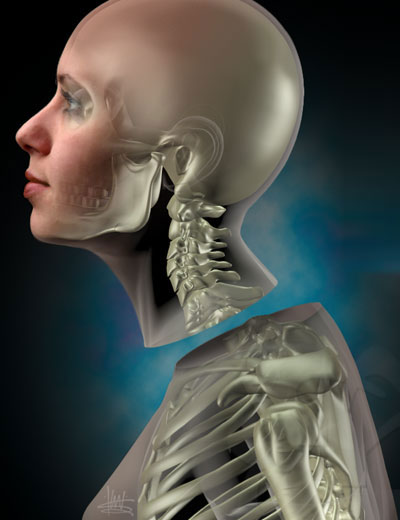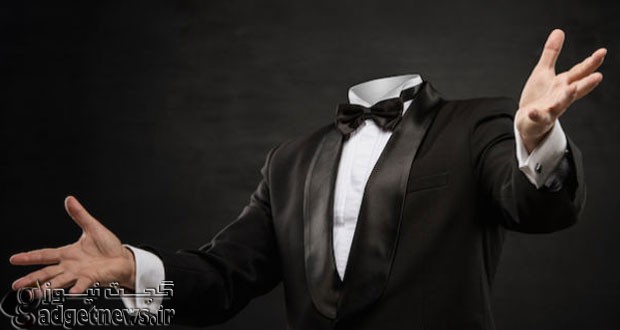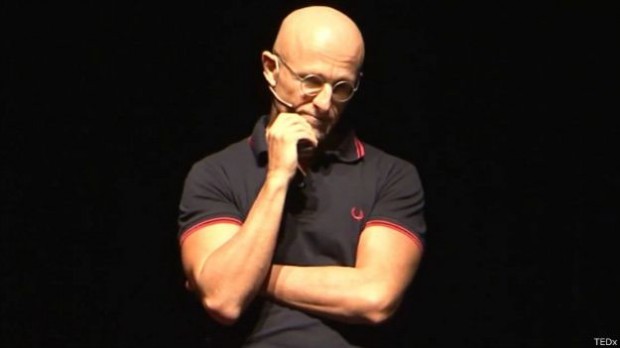بله عنوان مطلب را درست خوانده اید ! ظاهرا انقلابی علم پزشکی در راه است.مدیر ‘گروه مدولاسیون عصبی پیشرفته’ در تورین ایتالیا میگوید پیشرفتهای پزشکی امکان جراحی پیوند سر (یا به تعبیری پیوند بدن) را فراهم کرده و این جراحی هفت و نیم میلیون دلاری را می توان تا دو سال دیگر انجام داد.
 به نوشته نشریه نیوساینتیست، دکتر سرجو کاناورو جراح ایتالیایی قرار است تابستان امسال در کنفرانسی خبری در آکادمی جراحان اعصاب و ارتوپد آمریکا شروع این پروژه را اعلام کند.
به نوشته نشریه نیوساینتیست، دکتر سرجو کاناورو جراح ایتالیایی قرار است تابستان امسال در کنفرانسی خبری در آکادمی جراحان اعصاب و ارتوپد آمریکا شروع این پروژه را اعلام کند.
در این جراحی سر فردی که دچار مرگ مغزی شده اما بدنش سالم است با سر فردی دیگر که دچار ضایعه نخاعی یا بیماری های تخریب کننده عضلات و اعصاب است جابجا می شود.به گفته دکتر کاناورو “اکنون در مرحله ای هستیم که تمام جنبه های فنی این عمل امکان پذیر است.”
او همچنین میگوید لیستی طولانی از بیمارانی دارد که میتوانند کاندیدای بالقوه چنین عملی باشند، عملی که دکتر کاناورو قصد دارد در سال ۲۰۱۷ انجام دهد.
دکتر کاناورو درباره تکینک عمل این جراحی اخیرا مقالهای در نشریه بین المللی جراحی اعصاب منتشر کرده است :
برای این جراحی بدن فرد دهنده و گیرنده سر در ابتدای جراحی سرد می شود تا مدت زمانی که سلول ها می توانند کمبود اکسیژن را تحمل کنند افزایش یابد.سپس بافتهای گردن جدا می شوند و رگهای بزرگ با لوله هایی ظریف به هم متصل می شوند.بعد نخاع فرد دهنده پیوند را قطع کرده و سر او را روی بدن فرد گیرنده قرار می دهند، سپس نخاع با ماده ای به نام پلی اتیلن گلایکول که مثل چسب عمل میکند به نخاع بدن جدید متصل می شود.سپس فرد حدود چهار هفته در اغمای مصنوعی فرو خواهد رفت تا در مدتی که بافتها ترمیم می شوند تکان نخورد.در این مدت اعصاب و نخاع با شوک های الکتریکی خفیف تحریک می شوند تا پیوندها و ارتباطات آنها بین سر و بدن جدید محکم شود.اما برای اینکه بدن، سر پیوند شده را پس نزند باید فرد تحت درمان با داروهای قوی سرکوب کننده سیستم ایمنی قرار داشته باشد.
دکتر کاناورو معتقد است فرد بعد از به هوش آمدن قادر است سر خود را تکان دهد و صورتش را حس کند، با صدای قبلی صحبت کند و در عرض یک سال قادر به راه رفتن خواهد بود.دکتر کاناورو نخستین بار در سال ۲۰۱۳ این ایده را مطرح کرد اما خود او میداند که بسیاری از متخصصان چنین عملی را متعلق به آینده می دانند.
دکتر کاناورو می گوید:
اگر مردم چنین عملی را نمی خواهند من این کار را نخواهم کرد. اگر مردم در اروپا یا آمریکا آن را نمی خواهند به این معنی نیست که نباید در جای دیگری انجام شود.سعی من این است که کار درست را انجام دهم اما پیش از سفر به ماه، باید مطمئن باشید که مردم از کار شما استقبال می کنند.
هنوز برای این جراحی محلی در نظر گرفته نشده اما دکتر کاناورو علاقمندی خود را به انجام این جراحی در لندن ابراز کرده است.با این حال برخی متخصصان در اجرای این جراحی تردید کرده و آنها “تخیل محض” خوانده اند.هری گلد اسمیت پروفسور جراحی اعصاب در دانشگاه کالیفرنیا احتمال چنین عملی را “بسیار نامحتمل” می داند:
“من فکر نمی کنم این کار شدنی باشد، مشکلات چنین عملی بی اندازه زیاد است.”
پاتریشیا اسکریپکو، نورولوژیست معتقد است حتی اگر چنین عملی، شدنی باشد اتفاقی نادر خواهد بود:
“اینطور نخواهد شد که کسی بگوید من دارم پیر می شوم و آرتروز دارم پس شاید بهتر است بدنی داشته باشم که بهتر کار کند و ظاهر بهتری داشته باشد.”
به گفته دکتر کاناورو بزرگترین مشکل این عمل اخلاقی است:
“مهمترین مانع اخلاقی است. آیا اصلا چنین عملی باید انجام شود؟ مطمئنا افراد بسیاری با آن مخالف خواهند بود.”
با این حال متخصصان به مشکلات دیگر این جراحی هم اشاره میکنند، از جمله اینکه که کسی نمیداند تاثیر چنین عملی از نظر روانشناختی چه خواهد بود؛ اینکه فردی با سر فردی دیگر به زندگی ادامه دهد.
علاوه بر این کسی نمی داند چگونه می شود اعصاب نخاع را به هم پیوند زد و چگونه می توان کاری کرد که این ارتباطات به خوبی برقرار شده و کار خود را انجام دهد.
ریچارد برچنز مدیر مرکز تحقیقات بیماریهای فلج کننده در ایندیانای آمریکا می گوید “شواهد علمی درباره اینکه بعد از پیوند مغز و نخاع، حس و حرکت از نو باز میگردد، وجود ندارد.”

دکتر کاناورو معتقد پیوند سر را میتوان برای درمان بیماریهایی مثل بیماری استیون هاوکینگ (بیماری نورونهای حرکتی) بکار گرفت
دکتر کاناورو می گوید موفقیت این عمل به بسیاری از افرادی که دچار فلج نخاعی یا بیماریهای ناتوانکننده هستند امکان راه رفتن و زندگی تازه ای را می دهد.او حتی معتقد است این عمل برای کسانی مثل پروفسور هاوکینگ (که مبتلا به بیماری نورونهای حرکتی است) هم می تواند انجام شود.
نخستین پیوند سر در سال ۱۹۷۰ در کلیولند آمریکا انجام شد و طی آن، سر یک میمون به بدن میمون دیگر منتقل شد.البته چون جراحان نتوانستند نخاع را پیوند بزنند میمون قادر به حرکت نبود. سیستم ایمنی میمون، پیوند را پس زد و او نه روز بعد مرد.
منبع : CNET
Human head transplant just two years away, surgeon claims
Human head transplant just two years away, surgeon claims
Surgeon Sergio Canavero will be embarking on a project to implement the world’s first human head transplant.
It’s a fascinating concept. You have an otherwise perfectly healthy head on a body that no longer functions. You have, also, an otherwise perfectly healthy donor body. What if you could take the head from its non-functioning body and transplant it onto the healthy body?
It seems like the stuff of science-fiction (and it has been), but it’s not, perhaps, as impossible as it sounds. Take, for instance, the work of Russian transplant pioneer Vladimir Demikhov, who in the 1950s successfully transplanted dogs’ heads onto the bodies of other dogs, creating living two-headed dogs (the linked video contains content that may be disturbing for some viewers). Or Doctor Robert White, who transplanted the head of one monkey on to the body of another in 1970 (the same warning applies).
The experiments of both scientists proved vital for the advancement of transplant techniques. But the animals didn’t survive very long; Dr White’s monkey lived for just nine days before dying of transplant immunorejection.
However, Surgeon Sergio Canavero, director of the Turin Advanced Neuromodulation Group in Italy, who first proposed a serious attempt at human head transplant in 2013, believes he has developed a technique that circumvents the difficulties experienced by Demikhov and White
White’s monkey, in particular, provides a fertile case for examining what can go wrong. No attempt was made to join the spinal cord of the transplanted head onto the host body, so the monkey was paralysed from the neck down and required artificial assistance in order to breathe.
Since that time, experimentation with head transplants has been minimal, but Dr Canavero believes that our knowledge of surgery techniques and how the human body works has caught up. “I think we are now at a point when the technical aspects are all feasible,” he told New Scientist.
In a paper published in Surgical Neurology International, he has outlined his technique: first, both the transplant head and the donor body would need to be cooled in order to slow cell death. Then, the neck of both would be cut and the major blood vessels linked with tubes. Finally, the spinal cords would be severed, with as clean a cut as possible.
Joining the spinal cords, with the tightly packed nerves inside, is key. The plan involves flushing the area with polyethylene glycol, followed by several hours of injections of the same, a chemical that encourages the fat in cell membranes to mesh.
The blood vessels, muscles and skin would then be sutured and the patient would be induced into a coma for several weeks to keep them from moving around; meanwhile, electrodes would stimulate the spine with electricity in an attempt to strengthen the new nerve connections. In case of rejection, the patient would be given anti-rejection immunosuppressants.
If the procedure was successful, Dr Canavero said, then the patient would possibly be able to walk again within a year — with physiotherapy to help. However, the technique has yet to be tested; Canavero intends to experiment on brain-dead organ donors, and another researcher — Xiao-Ping Ren of Harbin Medical University in China, who recently successfully performed a head transplant on a mouse — intends to test the technique on lab mice. If it doesn’t work, the polyethylene glycol could be swapped for stem cells, or the gap could be bridged using stomach membrane — a technique used to help spinal injury patients.
And that’s all without even taking into account the ethical considerations: in order to have the best chance of success, the donor body has to be still technically living. This also means that donor bodies — even if the procedure could be approved — would be in very short supply. Unsurprisingly, the concept leaves many uncomfortable.
“This is why I first spoke about the idea two years ago, to get people talking about it,” Dr Canavero said. “If society doesn’t want it, I won’t do it. But if people don’t want it in the US or Europe, that doesn’t mean it won’t be done somewhere else. I’m trying to go about this the right way, but before going to the moon, you want to make sure people will follow you.”
 گجت نیوز آخرین اخبار تکنولوژی، علم و خودرو
گجت نیوز آخرین اخبار تکنولوژی، علم و خودرو 








